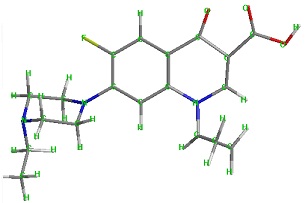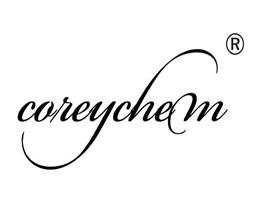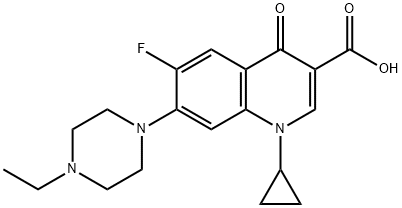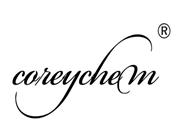| Veterinary fluoroquinolone antimicrobial agents |
Enrofloxacin and sarafloxacin, danofloxacin, difloxacin, ofloxacin, norfloxacin, orbifloxacin are commonly used third-generation fluoroquinolone broad-spectrum antimicrobial agents in veterinary clinic at present , is ethyl compound of ciprofloxacin, also known as ethyl ciprofloxacin, ethyl ciprofloxacin, norfloxacin, is effective on Gram-negative bacteria, Gram-positive bacteria and mycoplasma, its antibacterial activity is significantly superior to norfloxacin, the effect on mycoplasma is stronger than tylosin and Tiamulin Fumarate. This product is oral, intramuscular and subcutaneous injection, and is easily absorbed, widely distributed in vivo, in addition to the central nervous system, the concentration of the drug in other organizations, almost all are higher than the blood concentration. De ethylation in vivo, mainly produced active metabolite ciprofloxacin, but different among the animals metabolism are larger, birds, dogs, rabbits and cattle body's metabolic rates are high, horses and pigs body's metabolic rates are lower. Clinically Enrofloxacin is used for the treatment of various mycoplasma disease, and respiratory system, digestive system and urogenital system infections, skin infections and sepsis caused by E. coli, Salmonella, Haemophilus, Erysipelas bacillus, Staphylococcus, Streptococcus etc. Especially suitable for mixing infections caused by a variety of bacteria.

Spatial structure formulae diagram of Enrofloxacin
The above information is edited by the chemicalbook of Liu Yujie. |
| Reasonable compatibility |
1. Cooperated application of Enrofloxacin with aminoglycoside (gentamicin), third-generation cephalosporins (cefotaxime, ceftriaxone) and penicillin, colistin, may have synergistic antibacterial effect on certain bacteria (especially Pseudomonas aeruginosa or Enterobacteriaceae), in addition to penicillin-type drugs, due to enhanced toxicity, when in combination, need to reduce the dose, and administered separately.
2. Antibacterial activity of Enrofloxacin combined with apramycin enhanced, showed a synergistic effect. The reason was that antibacterial mechanism of apramycin was to specifically hinder biosynthesis of bacterial protein, and thus achieved effect on inhibiting and killing bacteria, while Enrofloxacin could specifically act on subunit A of bacterial DNA gyrase, inhibiting its activity, affecting DNA melting and sealing chain, both of combination had double blocking effect on bacterial replication and translation process.
3. at the same day were successively mixed to drink with colistin sulfate, can improve the efficacy of Enrofloxacin on chicken bacterial disease. and compatibility with SD silver used for the topical treatment of otitis in dogs.
Reference data: Zheng Hugong, Cui Yaoming editor. reasonable compatibility use of veterinary, Zhengzhou: Henan Science and Technology Press, 2009. |
| Incompatibility |
1. Enrofloxacin can inhibit metabolism of theophylline and caffeine, make the blood concentration increase, thereby causing toxic reactions.
2. Combined with anticholinergic drugs (atropine, 654-2) and H2 receptor antagonists (cimetidine, famotidine), making the bioavailability of Enrofloxacin reduce.
3. Enrofloxacin has a role in inhibiting liver drug enzymes, in combination with drugs metabolized in the liver such as erythromycin, lincomycin, etc. making its clearance decrease, blood concentration increased.
4. antacids may reduce absorption of Enrofloxacin in the gastrointestinal tract, not suitable for simultaneous use.
5. mixed with strongly acidic liquid and the strong alkaline liquid and precipitated.
6. Enrofloxacin and metoclopramide occur chemical changes, easy to turn into muddy, should not be mixed injection. |
| Side effects |
Toxicity of Enrofloxacin is less, safe for clinical use. Therapeutic doses have non-teratogenic and mutagenic effect. Can make young animals cartilage occur turbid, causing lameness and pain. Digestive system reactions are vomiting, abdominal pain and bloating. Skin reactions are erythema, pruritus, urticaria and photosensitivity reactions, etc. |
| Precautions |
1. Enrofloxacin aqueous solution was met with light and easy to change color and decompose, should be kept in dark place.
2. Drug-resistant strains of the product showed an increasing trend, not used at sub-therapeutic doses for long-term.
3. Antacids can inhibit the absorption of this product, should be avoided drinking at the same time.
4. In clinical application, can appropriately adjust dosage based on disease, concentration range of drinking water in poultry, per liter of water, added 25 to 100 mg.
5. withdrawal period of chicken is 8 days. Disabled in egg producing period of laying hen.
6. chicks are very sensitive to Enrofloxacin injection, had many poisoning report, the dose should be strictly controlled. |
| Uses |
1. Antimicrobial, for bacteria and mycoplasma infection.
2. New veterinary antimicrobial drugs, broad-spectrum, high efficiency, has special effects on Gram-positive and Gram-negative bacteria and mycoplasma. |
| Chemical Properties |
Pale Yellow Crystals |
| Uses |
Fluorinated quinolone antibacterial |
| Definition |
ChEBI: A quinolinemonocarboxylic acid that is 1,4-dihydroquinoline-3-carboxylic acid substituted by an oxo group at position 4, a fluoro group at position 6, a cyclopropyl group at position 1 and a 4-ethylpiperazin-1-yl group at position 7. It is a veterinary ant bacterial agent used for the treatment of pets. |

 China
China







